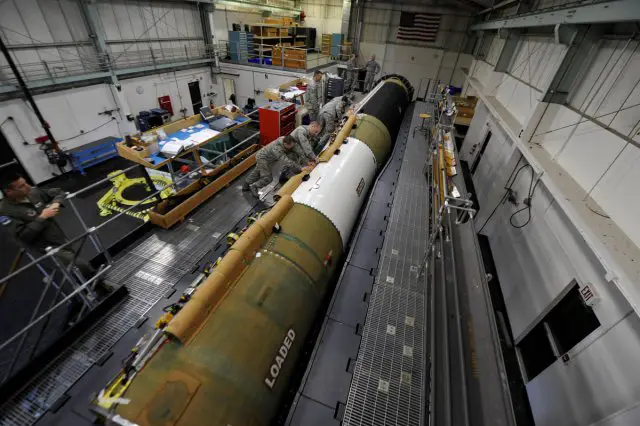Breaking news
Orbital ATK wins USAF contract to improve ICBM post-boost propulsion system.
| a | |||
|
|
|||
|
World Aviation Defense & Security Industry News - Orbital ATK
|
|||
|
|
|||
|
Orbital ATK wins USAF contract to improve ICBM post-boost propulsion system
|
|||
|
Orbital ATK, Inc, a global leader in aerospace and defense technologies, announced today that its Defense Systems Group has signed a contract with the U.S. Air Force (USAF) to research design and development options for its intercontinental ballistic missile system (ICBM).
|
|||
|
|
|||
 A 576th Flight Test Squadron Missile Handling Team installs a cable raceway on an Intercontinental Ballistic Missile at Vandenberg Air Force Base, Calif., Feb. 3, 2014 A 576th Flight Test Squadron Missile Handling Team installs a cable raceway on an Intercontinental Ballistic Missile at Vandenberg Air Force Base, Calif., Feb. 3, 2014(Credit: USAF/Staff Sgt. Jonathan Snyder) |
|||
|
|
|||
|
Part of a multi-year USAF Ground-Based Strategic Deterrent program (GBSD), the award will be used to explore enhanced propulsion capability through improvements and/or alternatives to current post-boost propulsion systems.
Orbital ATK’s effort will focus on trade studies and hardware demonstrations aimed at improving post-boost propulsion system effectiveness, reducing life-cycle costs, and increasing safety and reliability for future ground-based strategic missile systems. “Orbital ATK’s post boost technology offers the GBSD community with years of experience supporting numerous systems, including the U.S. Navy Trident II,” said Pat Nolan, Vice President and General Manager of Orbital ATK's Missile Products division of the Defense Systems Group. In service since the 1960s, the current Minuteman III represents the land-based component of the U.S. nuclear triad which, along with its sea- and air-based counterparts, supports the nation’s strategic defense. Once development is completed for the new GBSD system, it will begin replacing the Minuteman III starting in the late 2020s. Orbital ATK Defense Systems Group is an industry leader in providing innovative and affordable ammunition, precision and strike weapons, electronic warfare systems, and missile components across air-, sea-, and land-based systems. |
|||
,


























